
Though the library got its present name only in December 2008, it has been an integral part of ICTP since the very beginning. When the centre was inaugurated in 1964, it was in downtown Trieste, in Piazza Oberdan, occupying a few offices in Palazzo della Regione, which is a building for the regional government. The library was just a single room, with about 1416 books and around 70 journal titles which were procured using the initial budget allocation of USD 20,000 for the library.
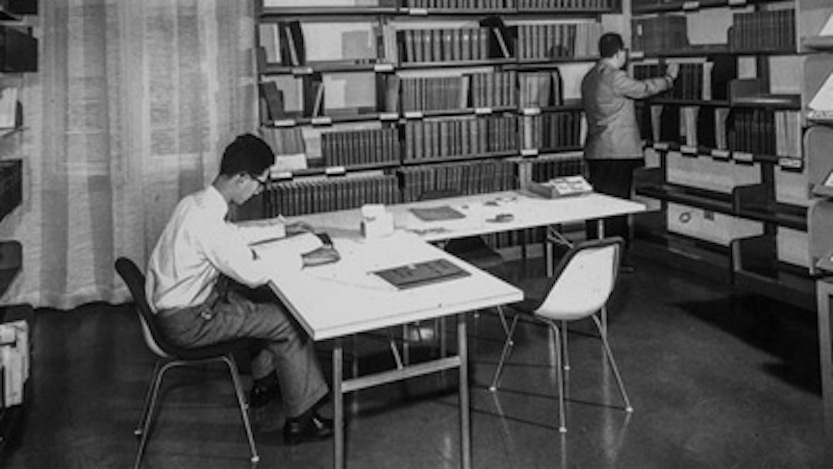
The present ICTP building was built in 1968 and the library moved there as well, to a section on the first floor of the Leonardo building. The floor in this section has been reinforced to sustain the weight of so many books. Inevitably, the print collection of books and journals expanded over the years. For some time during the 1980s, the library was housed at two locations, with a small part of the collection being kept at the Adriatico Guesthouse. The Adriatico extension of the library was eventually dismantled and two storage spaces were put into use instead, one at the Leonardo building and one at the Enrico Fermi building which was built in the early 1990s.
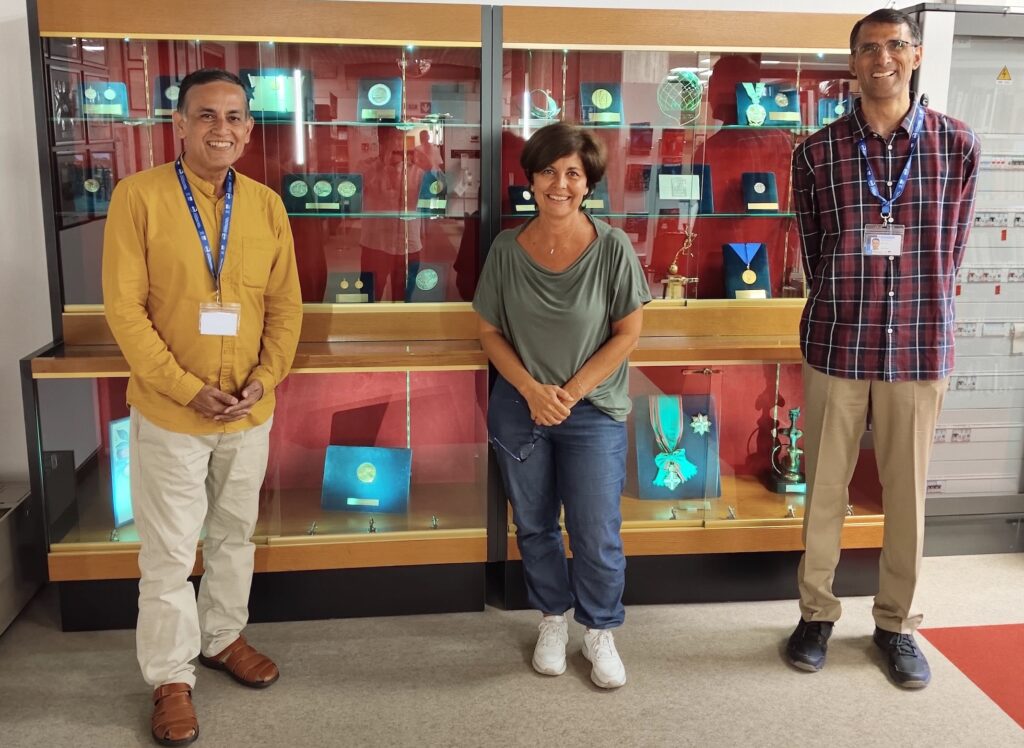
After seeing this we were curious that we did not find anything related to Marie Curie though the library is named after her. Valerio Cappellini from the information desk guided us to the section just to the left of the library entrance where we could see the bust of Marie Curie and some photographs from her life displayed.
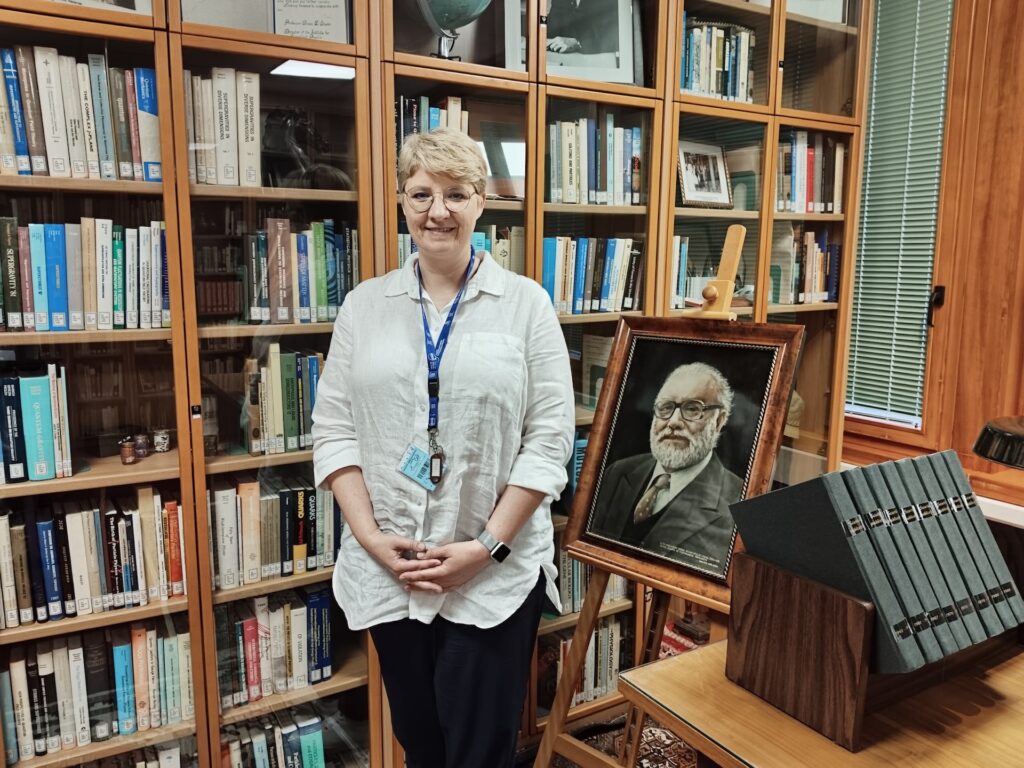
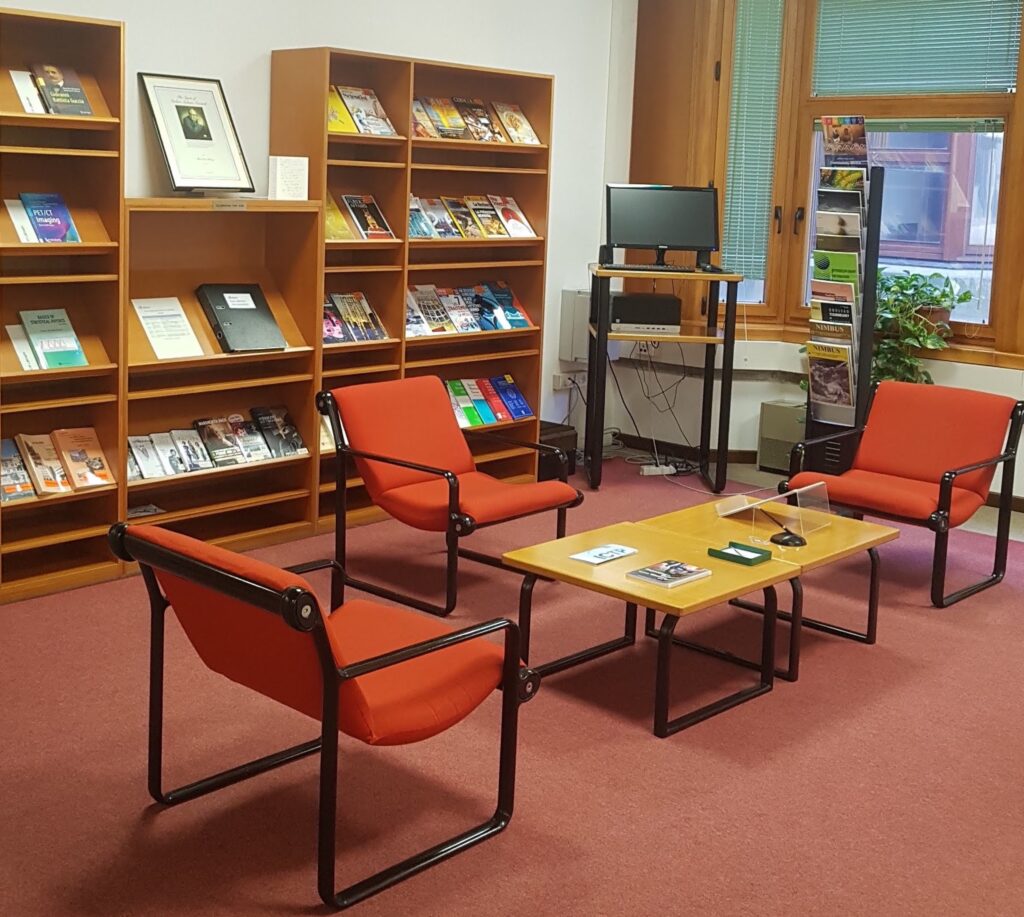

Historically though, the ICTP library has been “a bit of an island”, in Eva’s words. The library policy dictated prioritizing the ICTP community, who are very mobile. So inter-library loans become difficult if the priority has to be for the book to be available to the ICTP users, who could be visitors visiting only for a couple of days. There has been cooperation with the University of Trieste Physics Department, and with SISSA, but it is limited to Trieste. But, the technological shift to online resources in recent years is now enabling much more collaboration and ICTP is in a consortium with other UN libraries which together have a big, shared acquisition contract. However, ICTP has certain unique challenges in these kinds of collaborations too. For example, there is a consortium of university libraries within Italy which is very difficult for ICTP to enter, in spite of being based in Italy and doing science and research, because ICTP is not a university. On the other hand, though ICTP is a UN institution, it is doing research in contrast to the other classic UN libraries which are more concerned about documenting what is going on in all the meetings. So it has been difficult for ICTP to participate here or there. But there are options that Eva is pursuing, “We are a member of LIBER.1 We proactively participate in the conferences and working groups there. So we’re also trying to get out into the world and connect to other libraries and to other colleagues, and exchange knowledge so that we are not isolated here”.
While work on these long-term goals is gathering momentum, Eva is also very focused on figuring out ways in which the library can serve its users better, in its day-to-day activities. She says, “The library is not a private living room of librarians. It’s the users’ library and we want to make it even more user-oriented”. Towards this aim, the whole library space is being reimagined. One of the major challenges in this is the huge amount of space occupied by the print material. Ever since joining ICTP just around the time when the COVID pandemic was ending, this has been a focus area for Eva. At that time, ICTP had already started licensing online journals, but the print version was still being stored. ICTP is not a `classical’ university with students and faculty who are on campus for the majority of the time. Rather, a large proportion of the potential library users are visitors and associates, and even the faculty members travel frequently. Given this migrant nature of the ICTP user base, with people working from all over the globe, it was not surprising that while the online journals were being heavily accessed, the print books showed barely about 2000 loans a year. These numbers prompted a slow transition to digital for the book collection as well, with support from the top management. In a span of three years, ICTP expanded their e-book collection from about 50 to about 55,000. The advantages are obvious, as Eva explains, “The idea is also that with the e-books we have unlimited user licenses. There are like 6,000 people at once downloading. If you have only one print copy, it’s a bit difficult”. These e-books are accessible to the whole ICTP community, including short-term visitors like us while we were there. The licensing is worked out in a way so that all users at ICTP are able to access the catalogue, download the book, and keep it forever. Eva is quick to point out, “Of course, you’re not allowed to sell it”. The results have been spectacular. “I’m very proud to say that only in the past year we managed to have 1,04,000 downloads compared to the earlier number of 2000 loans a year”, says Eva.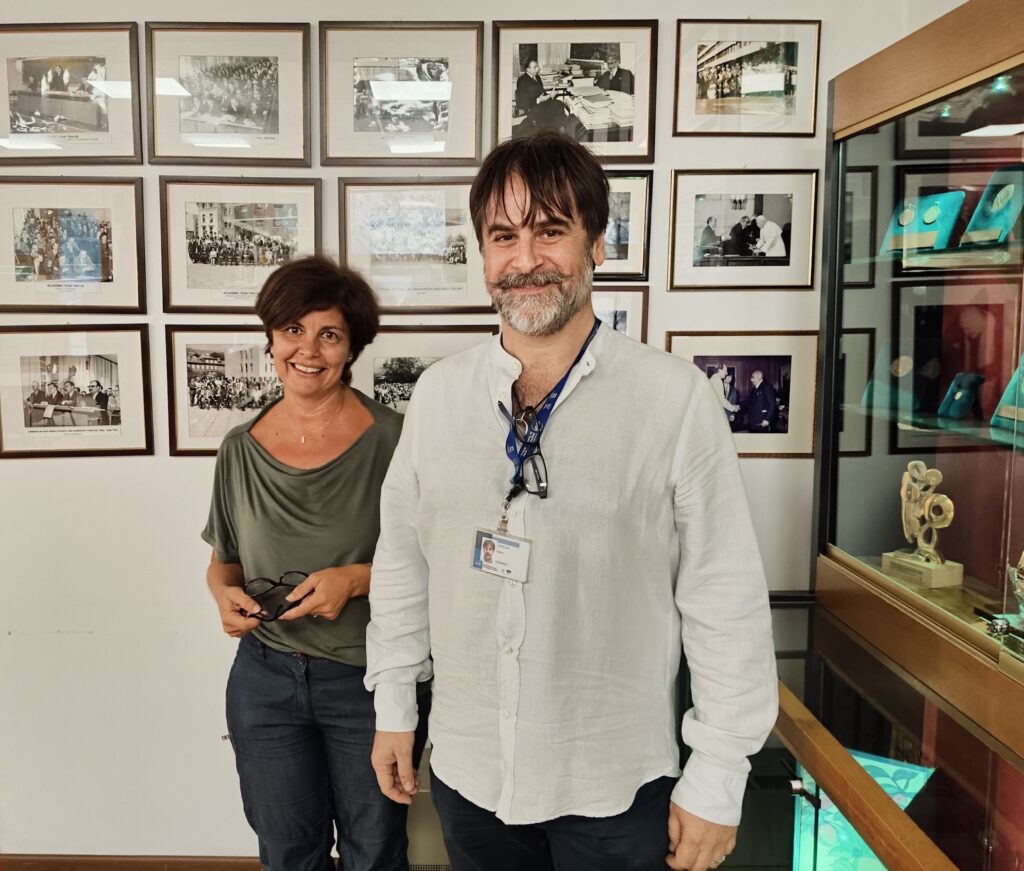
There are two modes in which the e-book licenses are acquired. Either they are purchased outright or there is a subscription that has to be renewed every few years. For the users, nothing changes, but from a library perspective, there is a significant difference. For the purchased licenses, the print books can be done away with. But, “we cannot just go ahead and throw out the subscription licensed books. Because if at one point the management tells me, `Listen, you don’t have the funds’, then I don’t have a library. So, we have to be very careful here”, explains Eva.
The digitization strategy obviously needs funds for all the licenses, which in turn impacts another aspect of the library management: the selection of journals and titles to be continued or discarded and the addition of new titles to the collection. This is a continuous exercise involving analysis of the usage statistics across publishers and journals. Eva gives us some insight into one of the approaches they use, “Using the `Web of Science’ as a basis, we search all the publications of our own scientists and extract the references they cite. Our approach is, if you cite something it must have been an important paper in an important journal. That is one way we identify what are the top journals, let’s say what our scientists have been reading for the past three to five years. That is one of the ways and, of course, if we’re uncertain we always ask our scientists”.
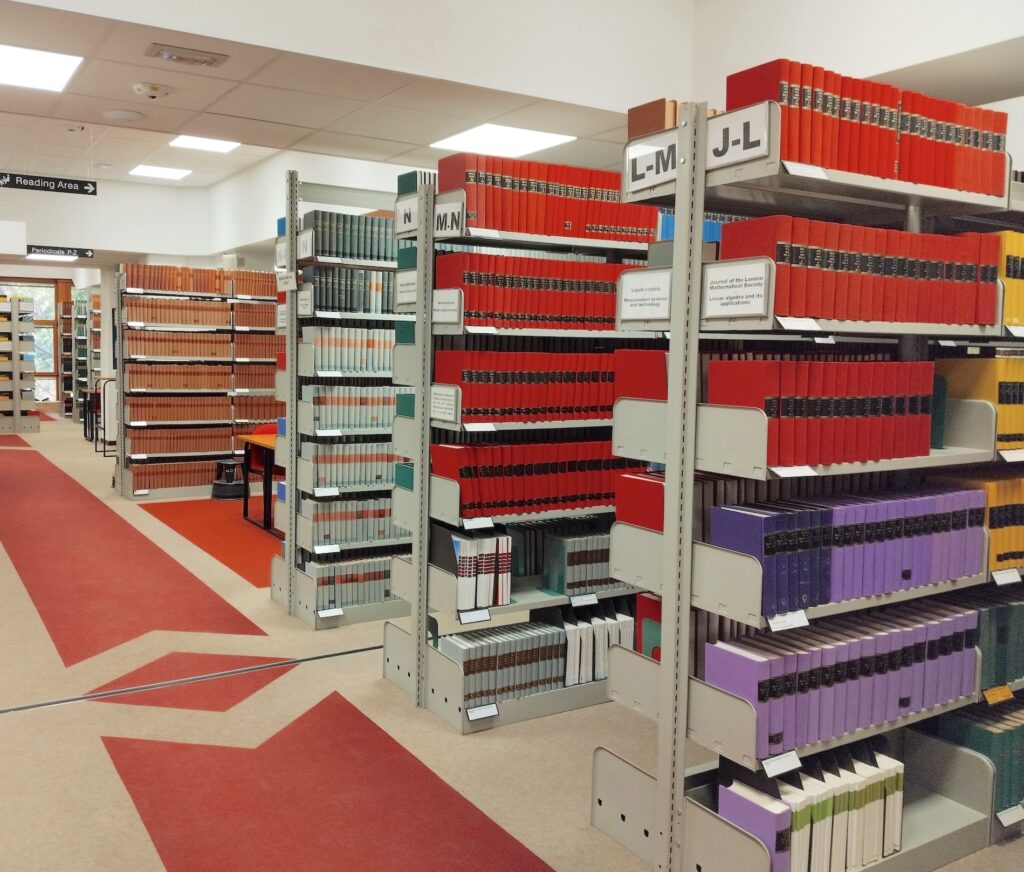 |
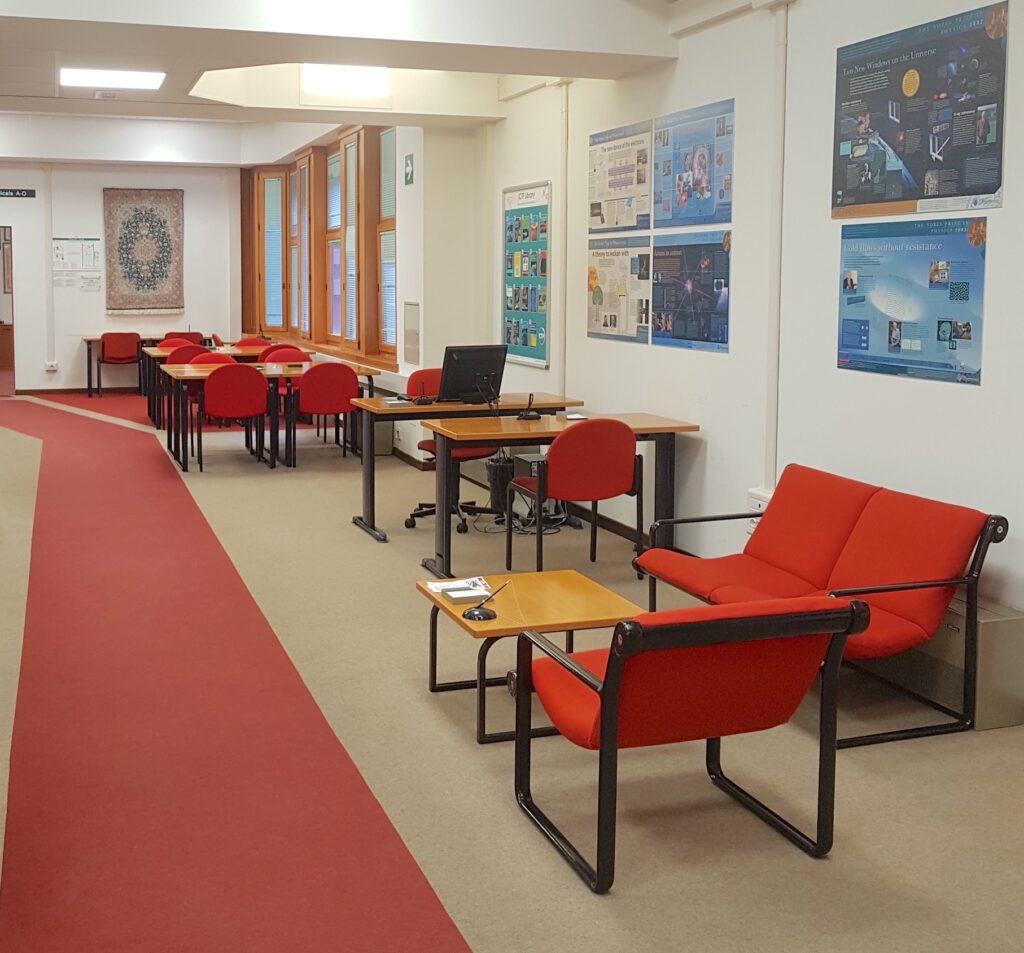 |
For any bibliophile, it is never easy to give away books. But this is a necessary part of reducing the print collection. Says Gianna, “A very difficult task I’m involved in is our weeding process. I mean, to deselect titles from the collection. We have criteria, obviously, but to get rid of books from the collection, it’s something you don’t want to let go”. All this is not to say that the library is eventually planning to do away with all print material. Both print and e-books will co-exist in the long term. As Eva explains, “The idea is to have a print collection that has something special and precious about it. So you go to the library to particularly have this print book because it has something special that is worth the effort of going to the library. And the rest, all the literature that is the working material for scientists should be available online. It should be accessible from wherever you are. Our idea is to have your library in your pocket, on your phone, on your computer, on your mobile device”.
Apart from e-books, there are several other gems in the ICTP collection that are planned for digitization, such as the lecture notes series arising from the very first activities of ICTP, the Salam archives, which include original handwritten documents and notebooks of Salam, documentation about the history of ICTP since its inception, and such. The library has also recently received archival material including manuscripts, photos and videos about Budinich2 from his family. All this will be made searchable and downloadable for every ICTP user through a single, seamless discovery tool that is also a part of the library’s technical infrastructure modernization plan. Another aspect of this plan is to enhance the library’s web presence. This was an important item for Eva because the physical library will need to close temporarily when the library space is being reorganized, so the users need to be able to find our services online.
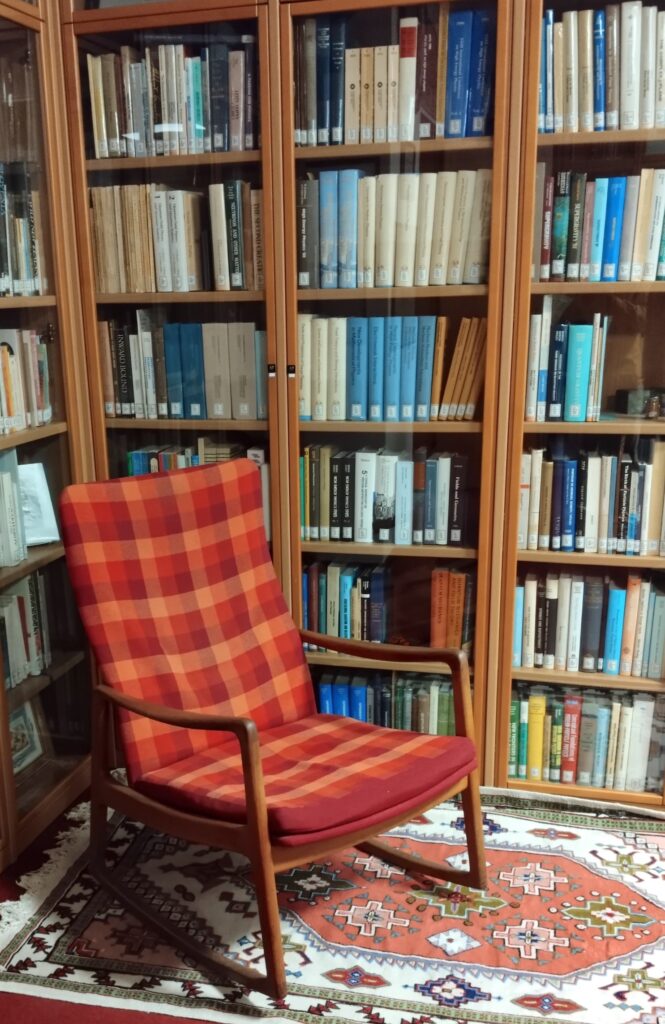
The library is also connecting, and helping ICTP connect, with the local community. Recently, the library has been opening up to school visits, mostly Italian high school students. Says Gianna, “I think it’s inspiring for their careers, for their future too, from a different perspective. Because our institution is so different and unique from all other institutions in Italy and in Europe, it is an `international’ centre in the true sense”.
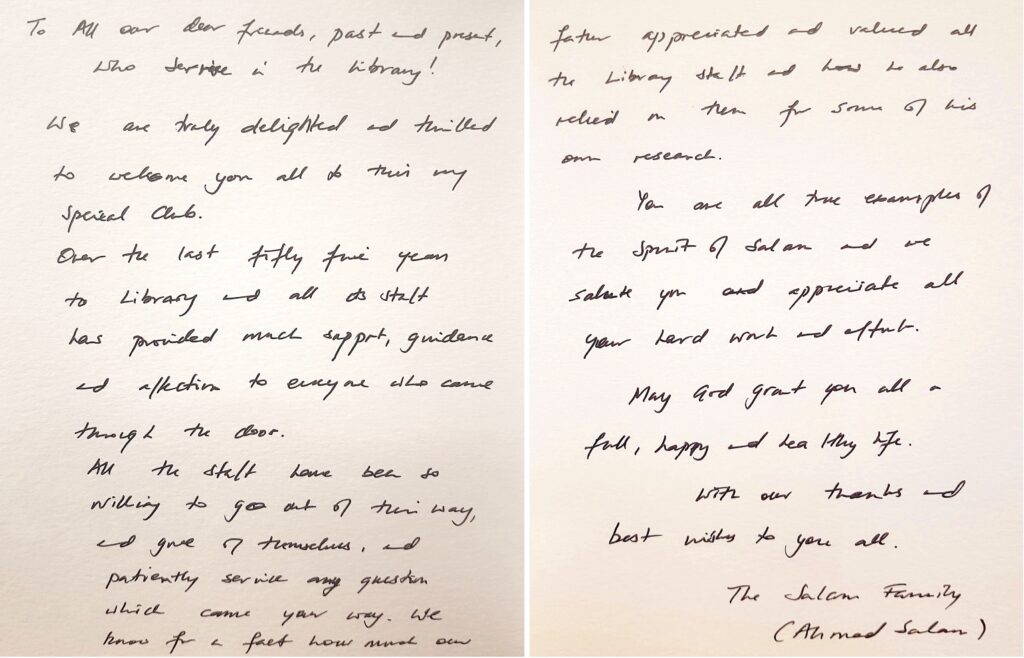
As an organization itself, ICTP recognizes the crucial role and contributions of the library. This was made explicitly evident when the library received the Spirit of Abdus Salam award, which has been instituted by Salam’s family for recognizing anyone within the ICTP community for exemplifying Salam’s vision. Usually, it is given to individuals, but in 2019, the library as a team received this award. Recalls Gianna, “It was a really touching moment for us. It was not just the award, but the acknowledgement of our work for so many years. At that time, the library head was Nicoletta Zar. During her speech, she said that we can compare the librarians who dedicated their time to their jobs to a kind of army. There is not just one person to be thankful to, but really many people who collaborated to create a great place like our library”.
The commitment of the library team to proactively redefine themselves and not rest on their laurels is truly praiseworthy, as is their engagement with both the global library community and their local host community. It is no wonder then, that accolades to the library found a mention in almost every interview we had, from the director right down to the students at ICTP. Indeed, Stefano Luzzatto even mentioned how the library assisted him in doing some statistical research to understand the geographical distribution of the scientists who have published in the top journals in the past few years. That is a clear sign of the Marie Curie Library having a healthy and active user engagement and not just existing as a passive repository of knowledge.
We wish Eva and her team the best for accomplishing the vision that they have created for themselves.\blacksquare
